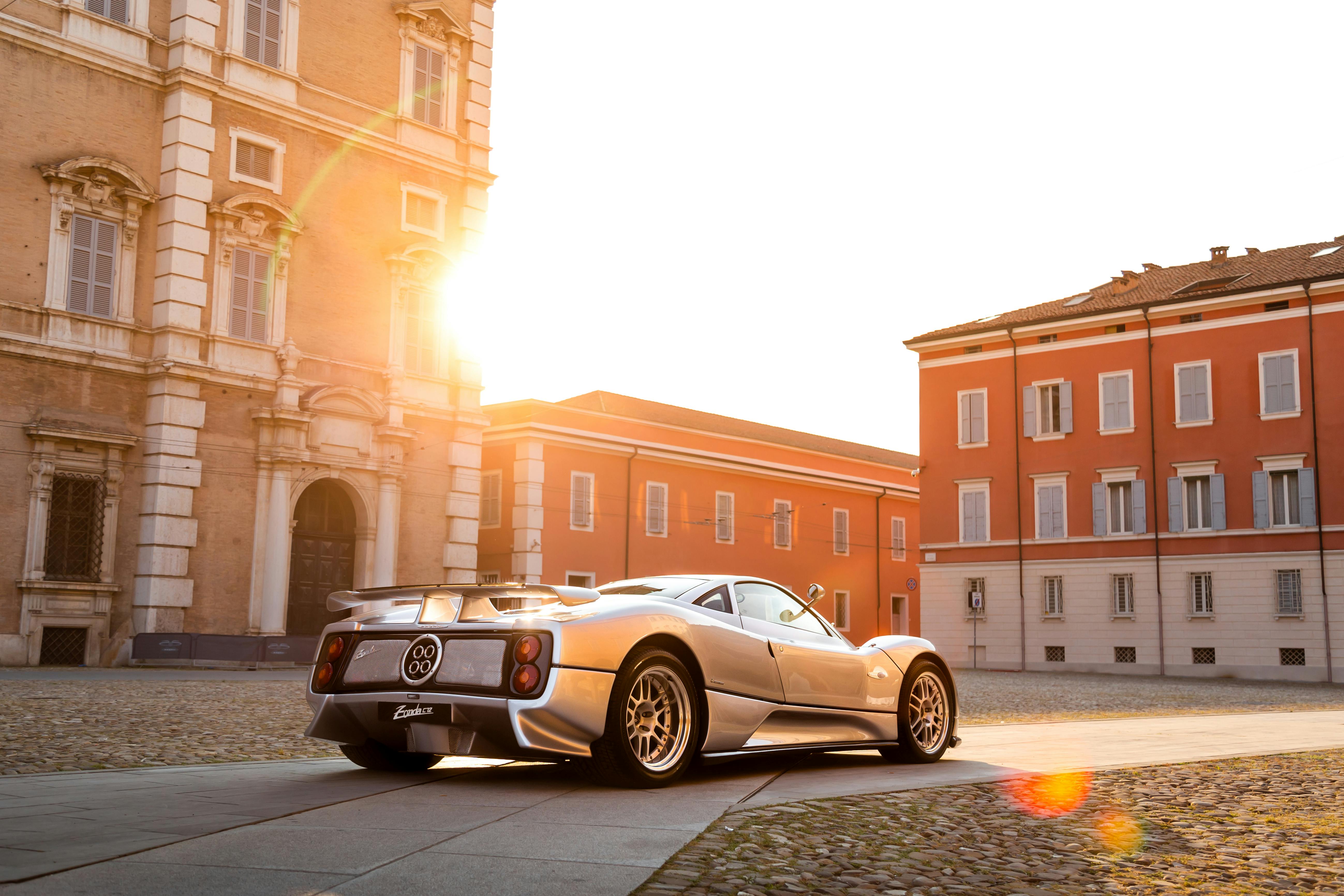
In an automotive landscape often dominated by the dazzling, high-octane spectacle of European supercars, a subtle yet significant shift has been taking place, particularly among discerning enthusiasts and trendsetters in the cultural zeitgeist. Increasingly, figures known for their opulent tastes and formidable car collections, including prominent rappers, are turning their attention from the usual six-figure exotics to a different breed of performance machine: the ultra-rare Japanese tuner car. This isn’t merely a fleeting trend; it represents a deeper appreciation for engineering prowess, customization potential, and an unmatched bang-for-your-buck performance that challenges the very notion of automotive prestige.
Indeed, as we’ve seen in various circles, some of the world’s quickest performance machines weren’t born in pristine, multi-million-dollar factories designed for limited runs, but rather in backyards, garages, and specialized tuning shops. These are the vehicles that took humble beginnings, applied serious wrench work, and ended up outrunning the so-called elite. They are the underdogs, the disruptors, the machines that, as one might put it, ‘eat supercars for breakfast,’ often at a fraction of the cost, embodying the spirit of performance and customization while defying the dominance of overpriced supercars.
This in-depth exploration will delve into the specific models and fundamental principles that make Japanese tuner cars such a compelling, and often superior, investment for those who value genuine performance, unique style, and a connection to a vibrant subculture. We will uncover why these machines, from their artful designs to their legendary engines and immense tunability, are not just alternatives, but formidable contenders that demand respect on both the street and the track, offering a narrative far richer and more engaging than mere brand recognition.

1. **Mazda RX-7 FD: The Rotary Phoenix of Performance**The Mazda RX-7 FD kicks off any serious discussion about Japanese tuner excellence with an undeniable presence. It is a machine revered for its artful design and, crucially, its potent rotary engine. This unique powerplant is a testament to Mazda’s engineering audacity, setting the RX-7 apart from its piston-driven contemporaries and bestowing upon it a distinctive character that resonates deeply with true car enthusiasts.
Do not let the rotary engine’s size deceive you; its potential is immense. With the right tweaks and dedicated tuning, this lightweight marvel is capable of reaching a formidable 500 horsepower. This level of output, especially from a compact, high-revving engine, is precisely why tuners have been coaxing absurd horsepower out of these machines for decades, consistently pushing boundaries and proving the inherent strength of its design platform.
The RX-7 FD’s allure is further amplified by its sleek curves and a chassis that is intrinsically balanced and agile. A built RX-7, especially when turbocharged to the moon, can keep up with, and often surpass, just about anything on the road. It embodies a philosophy of performance where lightness, balance, and a rev-happy engine combine to deliver an exhilarating driving experience that few other vehicles, regardless of price tag, can genuinely match.
Car Model Information: 2023 Hyundai SANTA FE Calligraphy
Name: Mazda RX-7
Caption: 1994 Mazda RX-7 R2 (FD3S)
Manufacturer: Mazda
Aka: Mazda Savanna RX-7 (Japan, 1978–1991),Mazda ɛ̃fini RX-7 (Japan, 1991–1997)
Class: Sports car
Production: 1978–2002,811,634 produced
Assembly: Hiroshima
Platform: Mazda F platform
Layout: Front-engine, rear-wheel-drive layout#Front mid-engine, rear-wheel-drive layout
Predecessor: Mazda RX-3
Successor: Mazda RX-8
Categories: 1980s cars, 1990s cars, 2000s cars, 24 Hours of Le Mans race cars, All articles needing additional references
Summary: The Mazda RX-7 is a front mid engine, rear-wheel-drive, rotary engine-powered sports car, manufactured and marketed by Mazda from 1978 to 2002 across three generations, all of which incorporated the use of a compact, lightweight Wankel rotary engine.
The first-generation RX-7, codenamed SA (early) and FB (late), is a two-seater two-door hatchback coupé. It featured a 12A carbureted rotary engine as well as the option for a 13B rotary engine with electronic fuel injection in later years. The second-generation RX-7, carrying the internal model code FC, was offered as a two-seater coupé with a 2+2 option available in some markets, as well as in a convertible body style. This was powered by the 13B rotary engine, offered in naturally aspirated or turbocharged forms. The third-generation RX-7, model code FD, was offered as a two-seater coupé with a 2+2 version offered as an option for the Japanese market. It featured a sequentially turbocharged 13B REW engine.
More than 800,000 RX-7s were manufactured over its lifetime.
Get more information about: Mazda RX-7
Buying a high-performing used car >>>
Brand: Mazda Model: RX-7 FD
Price: $31,989 Mileage: 21,971 mi.
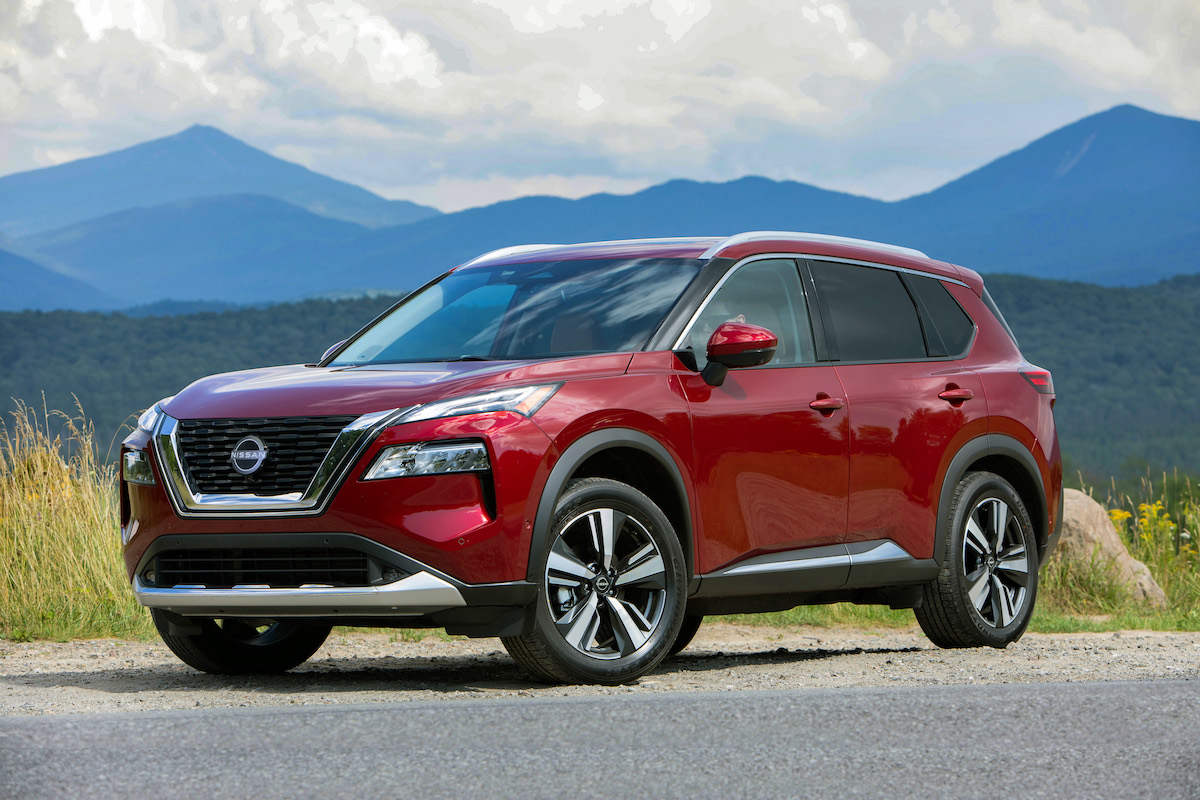
2. **Nissan Sylvia S15: The Drifting Icon with Untapped Power**Next on our formidable list is the Nissan Sylvia S15, a vehicle celebrated as a sleek beast and unequivocally known for its unparalleled drifting prowess. Its balanced chassis, coupled with a highly tunable engine, has made it a darling of the drift community and a staple in both professional competition and spirited street driving. The S15’s aesthetics are as sharp as its performance, projecting an aura of purposeful aggression.
Beyond its reputation on the slide, the Sylvia S15 holds significant untapped power for those willing to unlock it. It is known for its potential to hit 500 horsepower effortlessly with thoughtful modifications. This ease of power extraction, combined with its inherent agility, makes it an ideal canvas for tuners seeking to create a truly potent and versatile performance machine, one that can dominate various driving disciplines with graceful ferocity.
Many discerning drivers appreciate the S15 not just for its current capabilities, but for the inherent promise of customization it offers. Its enduring popularity stems from the fact that it consistently delivers thrilling performance and allows for extensive personalization. This blend of innate ability and tunability aligns perfectly with the ethos of those who desire to craft a truly unique and high-performing vehicle, one that reflects individual taste and engineering ambition.
Car Model Information: 2023 Hyundai SANTA FE Calligraphy
Name: Nissan Silvia
Caption: Nissan Silvia Autech Version (S15, Japan)
Manufacturer: Nissan
Production: unbulleted list
Class: Sports car
Layout: Front-engine, rear-wheel-drive
Categories: 1970s cars, 1980s cars, 1990s cars, 2000s cars, All articles needing additional references
Summary: The Nissan Silvia (Japanese: 日産・シルビア, Hepburn: Nissan Shirubia) is the series of small sports cars produced by Nissan. Versions of the Silvia have been marketed as the 200SX or 240SX for export, with some export versions being sold under the Datsun brand.
The Gazelle was the twin-model of Silvia sold in Japan at different dealerships for the S110 and S12 generations; the Gazelle name was also used in Australia for the S12 generation. For the S13 generation in Japan, the Gazelle was replaced with the 180SX, which was a hatchback model of the Silvia with pop-up headlights that was also sold as the 200SX and 240SX for export purposes.
Get more information about: Nissan Silvia
Buying a high-performing used car >>>
Brand: Nissan Model: Sylvia S15
Price: $31,989 Mileage: 21,971 mi.
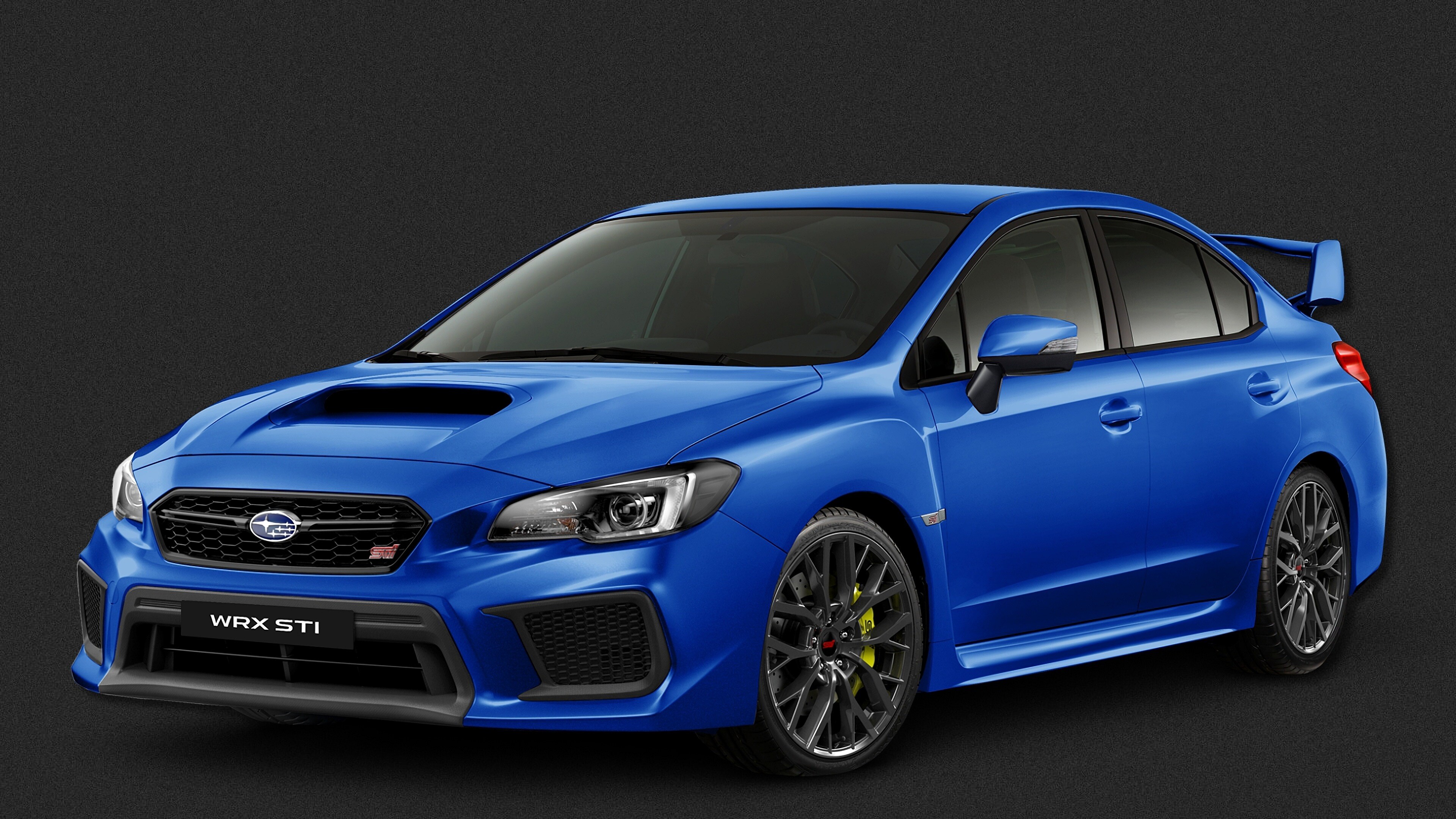
3. **Subaru WRX STI (GD Chassis): The Rally-Bred Street Weapon**The Subaru WRX STI, particularly the GD chassis, stands as a true street-legal rally car, quick right out of the box. Its rally pedigree and signature flat-four turbo engine instantly mark it as a serious contender, designed from the ground up to excel in demanding conditions. The symmetrical all-wheel-drive system provides exceptional grip and control, making it a favorite among enthusiasts who demand performance in all weather and road conditions.
The real magic of the GD STI, however, lies in its immense tuning potential. It can be transformed into an absolute powerhouse with a strategic selection of upgrades. Adding bigger turbos, incorporating built internals for enhanced durability, and integrating high-flow exhaust systems are just some of the modifications that elevate this already capable machine into a formidable street weapon, capable of outputs far beyond its factory specifications.
Numerous tuned Subies have earned their legendary status by embarrassing supercars in both spirited roll races and challenging backroad sprints alike. This ability to punch far above its weight class, delivering supercar-level performance at a fraction of the investment, makes the WRX STI an incredibly attractive proposition for those who prioritize genuine capability and exhilarating drives over badge snobbery and inflated price tags.
Car Model Information: 2023 Hyundai SANTA FE Calligraphy
Name: Subaru WRX STI
Caption: A Subaru WRX STI
Aka: Subaru Impreza WRX STI (1992–2014)
Production: Impreza
Assembly: Ōta, Gunma
Layout: Front-engine, four-wheel-drive layout
Manufacturer: Subaru
Engine: ubl
Transmission: ubl
Platform: Subaru SI Platform
Related: Subaru WRX
Class: Sport compact
BodyStyle: Sedan (automobile)
Categories: 2020s cars, All-wheel-drive vehicles, All Wikipedia articles written in British English, Articles with short description, Cars introduced in 2014
Summary: The Subaru WRX STI is a variant of the Subaru WRX sedan produced by in-house tuning company Subaru Tecnica International between 2014 and 2021. It succeeded the Subaru Impreza WRX STI. Production of the WRX STI concluded after its first generation, there are currently no plans for a VB WRX STI. STI also offers many factory-backed accessories usually available from dealerships, and accented in STI’s signature cherry blossom, a tribute to the iconic tree of the same name from the brand’s homeland of Japan.
Get more information about: Subaru WRX STI
Buying a high-performing used car >>>
Brand: Subaru Model: WRX STI
Price: $31,989 Mileage: 21,971 mi.
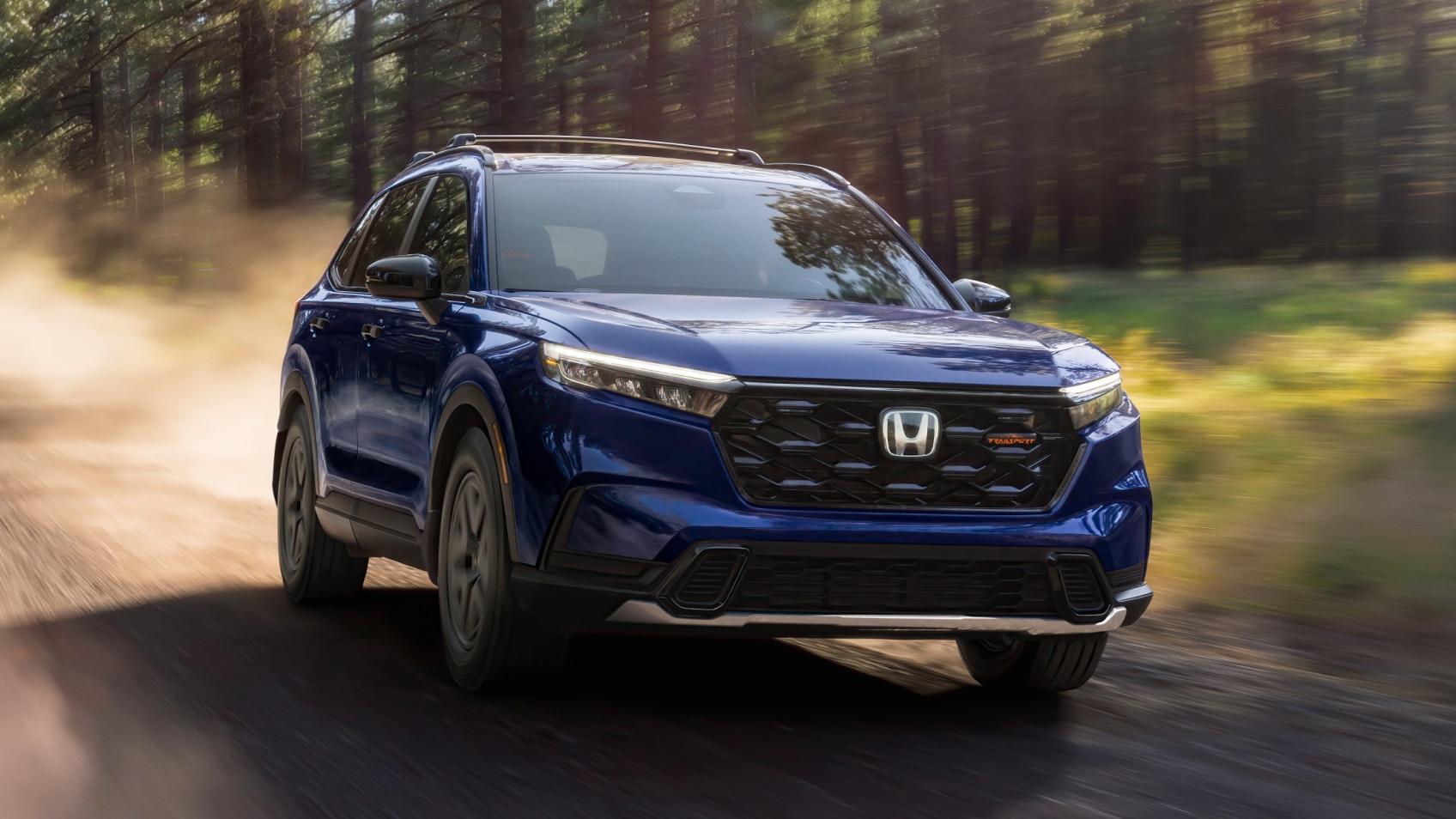
4. **Honda Civic (EG/EK Hatchback): The Underestimated Giant-Slayer**Yes, seriously. The Honda Civic, particularly the EG and EK hatchback generations, is often underestimated, but it surprises with its astonishing tunability. Far from its initial perception as merely a fuel-efficient economy car, the Civic, especially after the introduction of Honda’s F1-derived VTEC variable valve timing system in its fifth generation, became a lightweight legend. This inherent lightness and advanced engine technology laid the groundwork for its future as a performance icon.
A well-built Civic with a K-series engine swap and a turbo setup can demolish cars costing triple its price, embodying a classic David-versus-Goliath story where Goliath often loses. With the right modifications, these seemingly humble vehicles offer the potential to reach an impressive 400-500 horsepower. This transformation from an economy car to a high-performance machine is a testament to the ingenuity of tuners and the robust engineering of Honda’s B-series and K-series engines.
Ask any Honda enthusiast why these cars are so popular, and they will invariably point to the plethora of aftermarket parts choices available. The lightweight chassis, combined with sky-high revs and accessible modification pathways, allowed these FWD ‘lemons’ to be transformed into performance ‘lemonade.’ This accessibility and vibrant aftermarket support have ensured the Civic’s enduring status as a cornerstone of the tuner culture, offering a pathway to serious performance for a relatively modest outlay.
Car Model Information: 2021 Honda Civic EX-L
Caption: 2024 Honda Civic liftback
Manufacturer: Honda
Aka: ubl
Production: 1972–present
Class: Subcompact car
BodyStyle: fastback,Sedan (automobile)
Layout: Front-engine, front-wheel-drive layout,Front-engine, four-wheel-drive layout
Predecessor: Honda N600,Honda Z600
Categories: 1980s cars, 1990s cars, 2000s cars, 2010s cars, 2020s cars
Summary: The Honda Civic (Japanese: ホンダ・シビック, Hepburn: Honda Shibikku) is a series of automobiles manufactured by Honda since 1972. As of 2023, the Civic is positioned between the Honda Fit/City and Honda Accord in Honda’s global passenger car line-up. It is one of the best-selling automobiles in history, with over 27 million units sold through 2021.
The first-generation Civic was introduced in July 1972 as a two-door fastback sedan, followed by a three-door hatchback that September. With a 1,169 cc transverse engine and front-wheel drive, the car provided good interior space despite its small overall dimensions. Initially gaining a reputation for being fuel-efficient, reliable and environmentally friendly, later iterations have become known for performance and sportiness, especially the Civic Si, SiR, and Type R versions. It is currently in its eleventh generation, which has been produced since 2021.
The Civic has often been rebadged for international markets, and it served as the basis for the Honda CR-X, the Honda CR-X del Sol, the Concerto, the first generation Prelude, the Civic Shuttle (which later became the Orthia) and the CR-V (which in turn was used as the basis for the Honda FR-V).
Get more information about: Honda Civic
Buying a high-performing used car >>>
Brand: Honda Model: Civic
Price: $24,990 Mileage: 20,065 mi.

5. **Mitsubishi Lancer Evolution IX: The Rally Monster in Disguise**The Mitsubishi Lancer Evolution IX was, from its very inception, a rally-bred monster, a testament to Mitsubishi’s motorsport heritage. While already potent in stock form, what truly gave it teeth and elevated its status was its extraordinary tuning potential. This robust foundation, designed for the rigors of rally racing, provided an ideal platform for enthusiasts to unlock even greater levels of performance and aggression.
A built 4G63 engine, a legendary powerplant in its own right, paired with the Evolution’s inherently tenacious all-wheel-drive grip, transformed it into a genuine supercar killer in disguise. The synergy between its powerful engine and sophisticated AWD system allows it to launch with incredible force and maintain traction where lesser vehicles would falter, making it a formidable opponent on any surface, from tarmac to loose gravel.
Remarkably, some street builds of the Evo IX have been known to hit impressive 9-second quarter miles, an achievement that puts it squarely in the territory of exotic performance machinery. What makes this even more compelling is that these builds often retain creature comforts like a radio and air conditioning, proving that extreme speed doesn’t necessarily demand extreme sacrifice. The Evo IX thus represents a pinnacle of accessible, yet brutally effective, performance tuning.
Car Model Information: 2022 RAM 1500 TRX
Name: Mitsubishi Lancer Evolution
Caption: Mitsubishi Lancer Evolution X
Manufacturer: Mitsubishi Motors
Production: 1992–2016
BodyStyle: sedan (car),station wagon
Assembly: Japan:,{{blist,Okazaki, Aichi,Kurashiki, Okayama
Class: Sport compact car
Layout: Front-engine, four-wheel-drive
Engine: Straight-four engine,Mitsubishi Sirius engine#4G63,Mitsubishi 4B1 engine#4B11T
Transmission: Twin Clutch SST,5-speed automatic (2002, 2006–2007),manual transmission,6-speed manual (2003–2008)
Predecessor: Mitsubishi Galant VR-4
Related: Mitsubishi Lancer,Mitsubishi Lancer WRC,Mitsubishi Racing Lancer
Categories: 2000s cars, 2010s cars, All-wheel-drive vehicles, All Wikipedia articles in need of updating, All Wikipedia articles that are incomprehensible
Summary: The Mitsubishi Lancer Evolution, popularly referred to as the “Evo”, is a sports sedan and rally car based on the Lancer that was manufactured by Japanese manufacturer Mitsubishi Motors from 1992 until 2016. There have been ten official versions to date, and the designation of each model is most commonly a Roman numeral. All generations use two-litre intercooled turbo inline four-cylinder engines and all-wheel drive systems.
The Lancer was originally intended only for Japanese markets, but demand on the “grey import” market led the Evolution series to be offered through Ralliart dealer networks in the United Kingdom and in various European markets from around 1998. Mitsubishi decided to export the eighth generation Evolution to the United States in 2003 after witnessing the success Subaru had in that market the previous year with the Subaru Impreza WRX.
All domestic-market versions, until the release of the Evolution IX in 2005, were limited by a gentlemen’s agreement between Japanese car manufacturers to advertise no more than 280 PS (206 kW; 276 hp). However, sources say Mitsubishi had already been producing cars with more power but had been underrating the official power outputs in order to comply with the agreement. Therefore, each subsequent version has unofficially evolved above the advertised power figures, with the Japanese-market Evolution IX reaching an alleged output of around 320 PS (235 kW; 316 hp). Various special versions available in other markets, particularly the UK, have official power outputs up to 446 PS (328 kW; 440 hp).
The tenth and final generation of the Lancer Evolution, the Evolution X, was launched in Japan in 2007, and overseas markets in 2008. The Evolution X was produced for almost 10 years until Mitsubishi retired the Lancer Evolution in April 2016.
Get more information about: Mitsubishi Lancer Evolution
Buying a high-performing used car >>>
Brand: Mitsubishi Model: Lancer Evolution IX
Price: $75,887 Mileage: 27,561 mi.
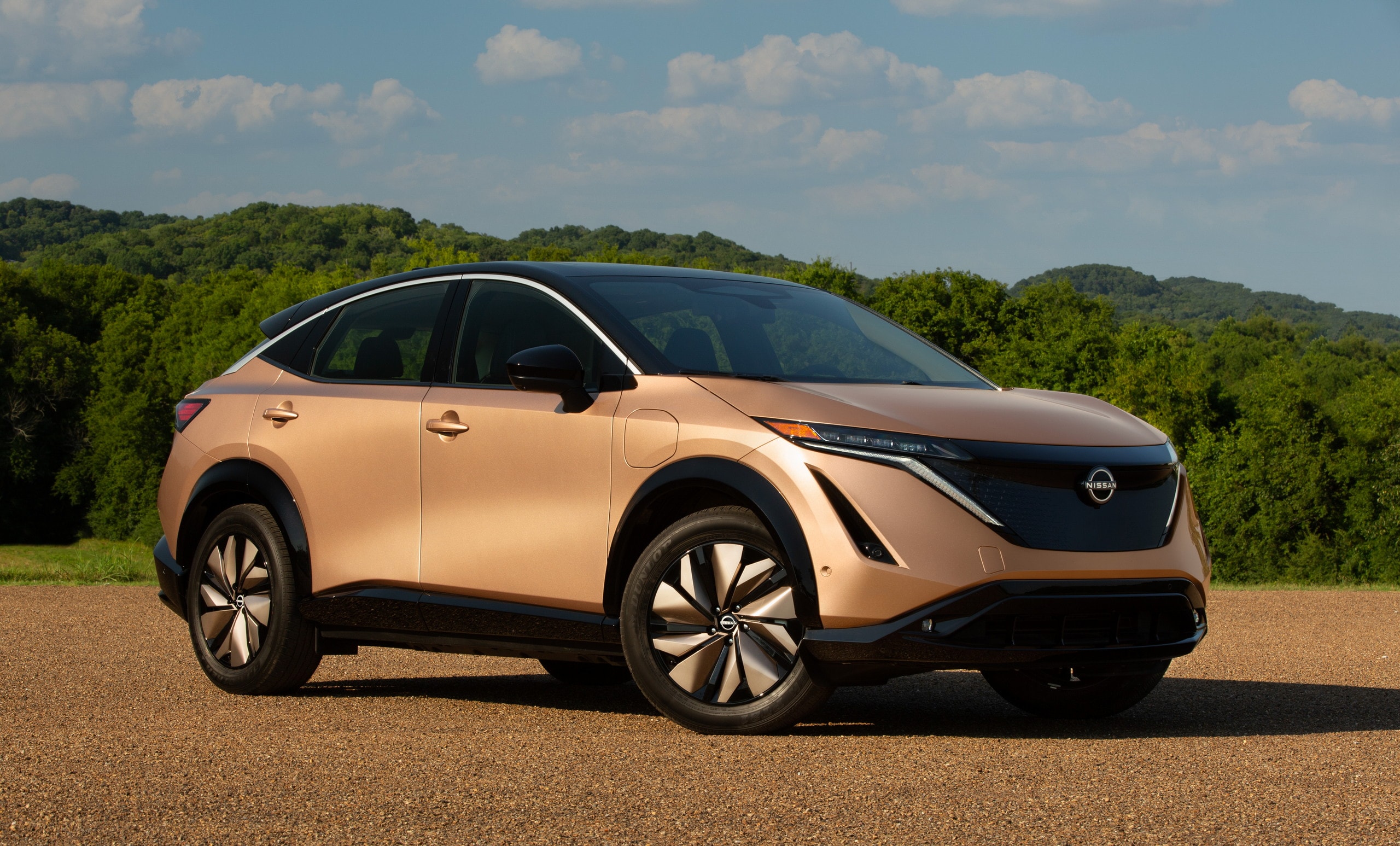
6. **Nissan GT-R (R32 ‘Godzilla’ & R33 GTR): Legends Forged in Fire**The Nissan GT-R, affectionately known as ‘Godzilla’ especially in its R32 iteration, earned its fearsome nickname for a reason. With a 2.6-liter twin-turbo inline-six engine and the revolutionary ATTESA all-wheel-drive system, it was already blisteringly fast straight out of the factory. This combination of advanced engine technology and sophisticated traction control made it a dominant force on race tracks and an instant legend among performance enthusiasts, laying the groundwork for its iconic status.
However, it was in the hands of dedicated tuners that the GT-R truly unlocked its full, earth-shattering potential. Built examples have been pushed well over 1,000 horsepower, a staggering figure that allowed these machines to routinely embarrass Ferraris and other high-dollar exotics on both the street and the track. In the ’90s, when the R32 reigned, very little could genuinely touch its combination of raw speed, grip, and tuning headroom.
The R33 GTR, though sometimes considered a hidden gem in the tuner world, continued this legacy of dominance. It boasts the legendary RB26DETT engine, an inline-six marvel renowned for its incredible strength and capacity to handle immense power. This engine is capable of handling over 1,000 horsepower with the right modifications, making the R33 a force to be reckoned with on the streets and a testament to Nissan’s engineering foresight in creating such an adaptable and powerful platform.
Car Model Information: 2015 Nissan GT-R Black Edition
Name: Nissan GT-R
Manufacturer: Nissan
ModelCode: R35
Production: December 2007 – August 2025
ModelYears: 2009–2024 (North America)
Assembly: Kaminokawa, Tochigi
Designer: unbulleted list
Class: Sports car
BodyStyle: 2+2 (car body style)
Layout: front-engine, four-wheel-drive layout
Platform: Nissan Premium Midship
Related: Nissan Juke-R
Engine: Nissan VR engine#VR38DETT,V6 engine
Powerout: unbulleted list
Abbr: on
Order: flip
Transmission: BorgWarner
Wheelbase: 2780 mm
Length: unbulleted list
Width: unbulleted list
Height: unbulleted list
Weight: unbulleted list
Predecessor: Nissan Skyline GT-R
Sp: uk
Categories: 2010s cars, 2020s cars, All-wheel-drive vehicles, All Wikipedia articles written in British English, Articles with hAudio microformats
Summary: The Nissan GT-R (Gran Turismo–Racing; model code: R35; Japanese: 日産・GT-R; Nissan GT-R) is a sports car, built by Japanese marque Nissan from 2007 to 2025. It has a 2+2 seating layout and is also considered a grand tourer. The engine is front-mid mounted and drives all four wheels. It succeeds the Nissan Skyline GT-R, a high-performance variant of the Nissan Skyline. Although this model was the sixth-generation to bear the GT-R name, it is no longer part of the Skyline line-up. The car was built on the PM platform, derived from the FM platform used in the Skyline and Nissan Z models. Production was conducted in a shared production line at Nissan’s Tochigi plant in Japan.
As per Nissan’s intention of creating a world beating sports car, the GT-R brand was revived as part of the Nissan Revival Plan. Overall development began in 2000, following seven years of development and testing, including the introduction of two concept models in 2001 and 2005. The production version of the GT-R was unveiled at the 2007 Tokyo Motor Show. The GT-R was a brand-new car built on the PM platform, and featured innovative concepts and technologies, such as advanced aerodynamics, the VR38DETT engine, an active suspension system and the ATTESA E-TS Pro all-wheel-drive system; it the first ever rear mounted independent transaxle all-wheel-drive vehicle. It was one of the first production cars to feature launch control and a dual-clutch transmission. The overall body was made out of steel, aluminium and carbon-fibre.
Unlike its predecessors, the GT-R was offered worldwide. It received various facelifts and updates comparable with the competition, and several special editions were offered during its prolonged production span. The car is used in motorsports, notably winning championships in the FIA GT1 World Championship, Super GT and in various GT3 racing series, including the GT World Challenge. It is well received among enthusiasts and automotive publications, British motor magazine Top Gear claimed it as “one of the most incredible cars of any kind ever built”, due its exceptional performance and practicality given at an affordable price. Being one of the fastest production cars—as it set the record for the fastest accelerating four-seater production car—it has won numerous notable accolades such as the World Performance Car of The Year among many others.
Sales in the Australian market were discontinued due to new side impact regulations. The European market, including the United Kingdom, were also suspended, with new noise regulations. Followed by the suspension of sales in North America, sales in Japan and other markets remained until August 2025, ending production of the GT-R after 18 years and nearly 48,000 units produced.
Get more information about: Nissan GT-R
Buying a high-performing used car >>>
Brand: Nissan Model: GT-R
Price: $124,999 Mileage: 4,973 mi.

7. **Honda S2000: The High-Revving Precision Instrument**Steering our focus towards pure driving exhilaration, the Honda S2000 emerges as a precision instrument, celebrated for its exquisite balance and an engine that loves to rev. It’s not just a car; it’s an experience, a two-seater roadster meticulously crafted to deliver an immersive connection between driver and machine. Its naturally aspirated engine, renowned for its incredible reliability and high redline, provides a unique auditory and tactile thrill that sets it apart from many turbocharged contemporaries, appealing to those who appreciate a more analog and visceral driving sensation.
While inherently potent in its stock configuration, the S2000 also presents a compelling canvas for tuners. With strategic modifications, its rev-happy engine can be coaxed to over 600 horsepower, a testament to Honda’s robust engineering and the aftermarket’s ingenuity. This capability transforms an already engaging sports car into a formidable track weapon or a blistering street performer, all while retaining its characteristic precision and poise. The inherent strength of its components makes it a reliable platform for substantial power upgrades, ensuring longevity even under extreme demands.
Indeed, the Honda S2000 is widely praised by enthusiasts as a legendary car, embodying the spirit of accessible yet high-performance Japanese engineering. Its legacy is further cemented by dedicated tuning houses like Spoon Sports, acknowledged by Honda as an official tuner, which has refined the Spoon S2000 for the Super Taikyu racing series. This specialized S2000 has been honed into one of the most successful cars in its class, demonstrating the profound impact of expert tuning on an already exceptional platform and solidifying its place in the annals of tuner culture.
Car Model Information: 2002 Honda S2000 Base
Name: Honda S2000
Manufacturer: Honda
Production: 1999–2009 (110,673 produced)
Class: Sports car
Layout: Front-engine, rear-wheel-drive layout#Front mid-engine, rear-wheel-drive layout
BodyStyle: Roadster (automobile)
Designer: Shigeru Uehara
Caption: 2005 Honda S2000 (AP2)
Predecessor: Honda S800
Categories: 2000s cars, All articles lacking reliable references, Articles lacking reliable references from May 2024, Articles with short description, CS1: unfit URL
Summary: The Honda S2000 is a front-mid engine open top sports car that was manufactured by Japanese automobile manufacturer Honda, from 1999 until 2009. First shown as a concept car called the SSM at the Tokyo Motor Show in 1995, the production version was launched on April 15, 1999, to celebrate the company’s 50th anniversary. The S2000 is named for its engine displacement of two liters, while “S” stood for “sports” carrying on in the tradition of the S500, S600, and S800 roadsters of the 1960s.
Several revisions were made throughout the car’s production life, including changes to the engine, gearbox, suspension, interior and exterior. Officially two variants exist: the initial launch model was given the chassis code AP1; though cosmetically similar, the facelifted version, known as the AP2 in North America and Japan, incorporated significant changes to the drivetrain and suspension. Production of the S2000 ceased on August 19, 2009.
The Honda S2000 was notable for its exceptional specific power output of about 92 kW (124 hp) per liter, or about two horsepower per cubic inch, the highest of any mass production, naturally aspirated car, until 2010.
Get more information about: Honda S2000
Buying a high-performing used car >>>
Brand: Honda Model: S2000
Price: $27,000 Mileage: 91,409 mi.

8. **Toyota Supra MK4: The Unquestioned Drag and Track Deity**No discussion of legendary Japanese tuner cars is complete without venerating the Toyota Supra MK4, a vehicle that has ascended to mythical status, largely due to its iconic 2JZ GTE engine. This inline-six powerplant is not merely an engine; it’s a phenomenon, a bedrock of engineering resilience that has become the stuff of legends. Its robust design and inherent strength made it a formidable performer straight from the factory, but its true genius lay in its astonishing capacity for power enhancement.
For tuners, the 2JZ GTE is nothing short of a dream, a blank canvas upon which to paint masterpieces of automotive performance. With judicious modifications, this engine can be pushed well past 800 horsepower on stock internals, and with a fully built setup, it’s not uncommon to see figures soaring beyond 1,200 horsepower. This incredible tunability has allowed enthusiasts to transform the Supra into unequivocal drag monsters or track demons, vehicles capable of annihilating competition with breathtaking acceleration and relentless speed.
This prowess extends beyond mere numbers; tuners worldwide have famously used the Supra to lay waste to Lamborghinis, McLarens, and anything else brave enough to line up alongside. The ability of these modified Supras to retain creature comforts while delivering such extreme performance, often surpassing cars costing ten times their price, is a cornerstone of their legend. The Supra’s iconic status was further cemented by its unforgettable star turn in the ‘Fast and the Furious’ film franchise, elevating it to pop-culture diva status and ensuring its enduring appeal.
Car Model Information: 2023 Hyundai SANTA FE Calligraphy
Name: Toyota Supra
Caption: Toyota GR Supra (J29/DB)
Manufacturer: Toyota
Aka: unbulleted list
Production: unbulleted list
Class: Sports car
BodyStyle: fastback,coupé
Layout: Front-engine, rear-wheel-drive layout
Predecessor: Toyota Celica (A20)
Categories: 1980s cars, 1990s cars, 2000s cars, 2010s cars, 2020s cars
Summary: The Toyota Supra (Japanese: トヨタ・スープラ, Hepburn: Toyota Sūpura) is a sports car and grand tourer manufactured and developed by the Toyota Motor Corporation beginning in 1978. The name “supra” is a definition from the Latin prefix, meaning “above”, “to surpass” or “go beyond”.
The initial four generations of the Supra were produced from 1978 to 2002. The fifth generation has been produced since March 2019 and later went on sale in May 2019. The styling of the original Supra was derived from the Toyota Celica, but it was longer. Starting in mid-1986, the A70 Supra became a separate model from the Celica. In turn, Toyota also stopped using the prefix Celica and named the car Supra. Owing to the similarity and past of the Celica’s name, it is frequently mistaken for the Supra, and vice versa. The first, second and third generations of the Supra were assembled at the Tahara plant in Tahara, Aichi, while the fourth generation was assembled at the Motomachi plant in Toyota City. The 5th generation of the Supra is assembled alongside the G29 BMW Z4 in Graz, Austria by Magna Steyr.
The Supra traces much of its roots back to the 2000GT owing to an inline-6 layout. The first three generations were offered with a direct descendant to the Crown’s and 2000GT’s M engine. Interior aspects were also similar, as was the chassis code “A”. Along with this name, Toyota also included its own logo for the Supra. It was derived from the original Celica logo, being blue instead of orange. This logo was used until January 1986, when the A70 Supra was introduced. The new logo was similar in size, with orange writing on a red background, but without the dragon design. That logo, in turn, was on Supras until 1991 when Toyota switched to its current oval company logo. The dragon logo was a Celica logo regardless of what colour it was. It appeared on the first two generations of the Supra because they were officially Toyota Celicas. The dragon logo was used for the Celica line until it was also discontinued.
In 1998, Toyota ceased sales of the fourth-generation Supra in the United States. Production of the fourth-generation Supra for worldwide markets ended in 2002. In January 2019, the fifth-generation Supra, which was co-developed with the G29 BMW Z4, was introduced.
Get more information about: Toyota Supra
Buying a high-performing used car >>>
Brand: Toyota Model: Supra MK4
Price: $31,989 Mileage: 21,971 mi.

9. **Nissan 300ZX (Z32 Twin Turbo): The Masterpiece of Style and Power**Next, we turn our attention to the Nissan 300ZX, specifically the Z32 Twin Turbo generation, a car widely regarded as a true masterpiece that expertly blends audacious style with formidable power. Its sleek, futuristic lines and purposeful stance were revolutionary for its era, projecting an aura of sophistication and high-performance intent that continues to captivate enthusiasts today. This vehicle offered a premium driving experience wrapped in a truly distinctive package.
Beneath its sculpted exterior lay a potent twin-turbo V6 engine, a marvel of Nissan engineering designed to deliver exhilarating performance. While impressive in its factory form, this powerplant possessed significant untapped potential for discerning tuners. With a carefully curated selection of upgrades, the Z32 Twin Turbo has the capability to effortlessly reach 500 to 600+ horsepower. This considerable power output, combined with its sophisticated chassis, makes it a genuine force to be reckoned with on the streets.
Despite its undeniable appeal, the Z32 Twin Turbo is known among enthusiasts for its complexity, often being described as a challenging car to work on due to its tightly packaged engine bay. However, this challenge often adds to its allure for dedicated tuners, who revel in the satisfaction of mastering its intricacies and unlocking its full potential. The effort invested is generously repaid with a driving experience that is both engaging and incredibly rewarding.
The 300ZX, and Z cars in general, played a significant role in defining the early Japanese tuner scene. The Z32 continues this legacy, offering a unique blend of timeless design, luxury, and high-performance tunability that ensures its continued appreciation by those who seek a sophisticated yet beastly machine. It stands as a prime example of Japanese automotive artistry and engineering excellence.
Car Model Information: 1990 Nissan 300ZX GS
Name: Nissan 300ZX
Class: Grand Tourer
Manufacturer: Nissan
Production: 1983–2000
Assembly: ubl
Aka: Nissan Fairlady Z
Layout: Front-engine, rear-wheel-drive layout
Predecessor: Nissan Fairlady Z (S130)
Successor: Nissan 350Z
Categories: 1990s cars, 2+2 coupés, All articles needing additional references, All articles with unsourced statements, Articles needing additional references from May 2021
Summary: The Nissan 300ZX is a sports car that was produced across two different generations. As with all other versions of the Z, the 300ZX was sold within the Japanese domestic market under the name Fairlady Z.
It was sold in Japan from 1983 to 2000 and in the United States from 1984 to 1996, the 300ZX name followed the numerical convention initiated with the original Z car, the Nissan Fairlady Z (S30), which was marketed in the U.S. as the 240Z. The addition of the “X” to the car’s name was a carryover from its predecessor, the 280ZX, to signify the presence of more luxury and comfort oriented features. The first generation 300ZX known as the Z31 model was produced from 1983 through 1989 and was a sales success becoming the highest volume Z-car for Nissan.
To become even more competitive in the sports car market, the second generation 300ZX was driven up-market. It was redesigned to be faster and to feature more advanced technology, but came with a higher price than its predecessor, with consecutive price increases each model year of availability. As such, sales dwindled each year, a trend in the higher end sports car market at the time, and Nissan placed a hiatus on selling new Nissan Z-Cars to the US after the 1996 model year, though the car would continue to be sold in the Japan domestic market until 2001 in low production numbers.
Car and Driver placed the Z32 on its Ten Best list for seven consecutive years, each model year of its availability in the United States. Motor Trend awarded it as the 1990 Import Car of the Year. The Nissan 350Z, officially the Z33 generation Z-Car, succeeded the 300ZX in 2003.
Get more information about: Nissan 300ZX
Buying a high-performing used car >>>
Brand: Nissan Model: 300ZX
Price: $24,664 Mileage: 21,680 mi.
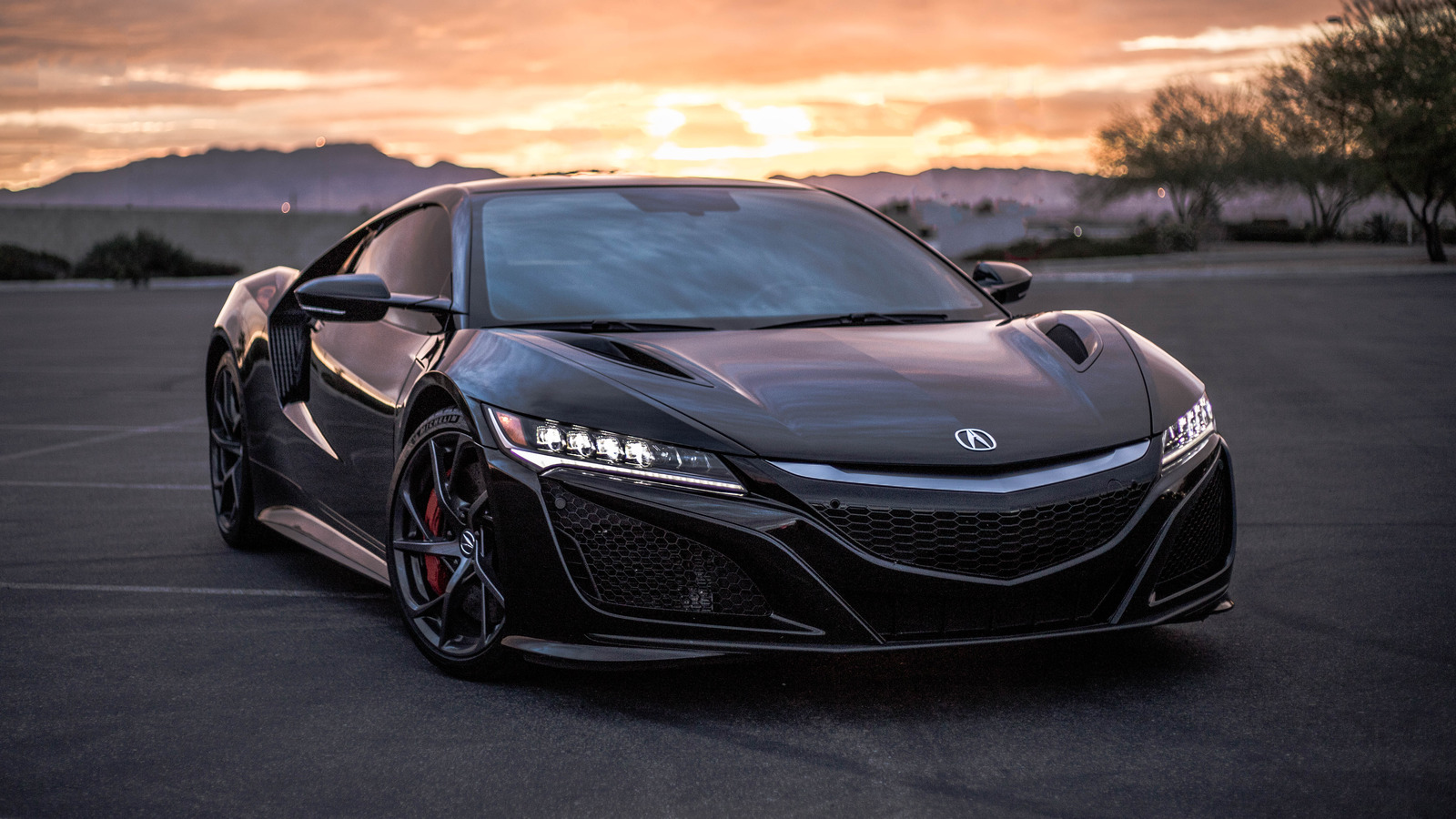
10. **Acura Integra Type R: The Lightweight Legend of Agility and Power**For those who prioritize precision and agility with a keen eye on performance, the Acura Integra Type R stands out as a lightweight legend. This car, particularly in its B-series engine iteration, was a high-revving masterpiece straight from the factory, offering a driving dynamic that was both engaging and immensely satisfying. Its inherent lightness, combined with a meticulously engineered chassis, provided an unparalleled sense of connection to the road, making it a favorite among purists and track enthusiasts alike.
However, the true magic of the Integra Type R, particularly for the tuning community, lies in the immense potential hidden within its B-series engine. Tuners quickly discovered a goldmine when they began boosting these already potent powerplants. With the right modifications—think turbochargers, upgraded internals, and precise tuning—the Integra Type R can easily unleash between 300 and 400 horsepower on the tarmac. This transformation elevates a capable track car into a genuine giant-slayer, capable of embarrassing far heavier and flashier cars without breaking a sweat.
The accessibility of aftermarket parts and the relative simplicity of its mechanics further contribute to the Integra Type R’s enduring popularity. Enthusiasts are presented with endless tuning possibilities, allowing them to craft a machine perfectly suited to their individual driving styles and performance aspirations. This blend of factory-tuned excellence and aftermarket adaptability makes it an incredibly attractive proposition for those looking to invest in a vehicle with a proven track record and a vibrant, supportive tuning community.
Read more about: Gear Up for Glory: 15 Unforgettable Rides That Defined the Legendary 1970s Automotive Scene
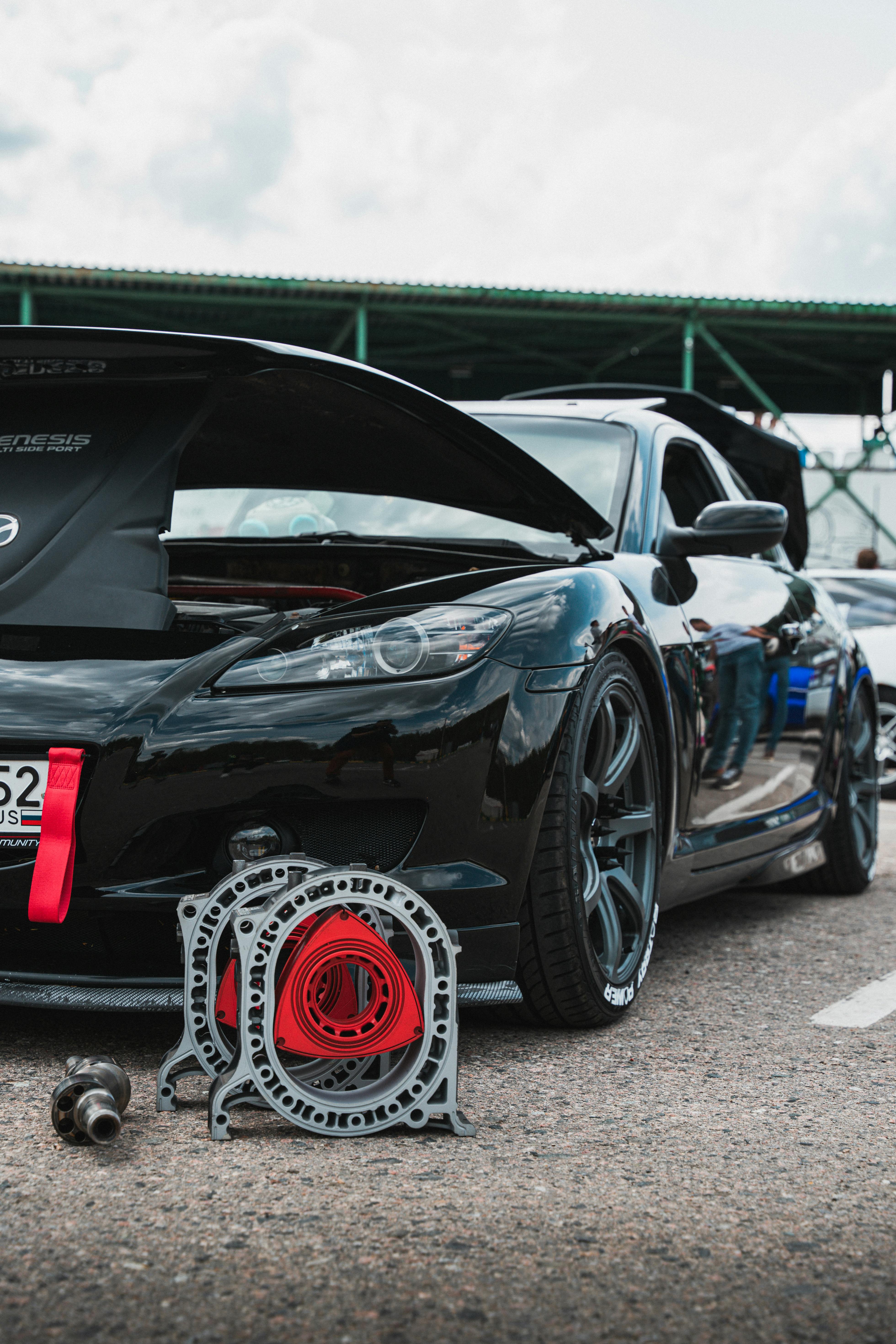
11. **Mazda RX-8: The Rotary’s Refined Evolution**While its predecessor, the RX-7 FD, commanded attention with raw power, the Mazda RX-8, manufactured between 2003 and 2012, brought a refined evolution to the rotary Wankel engine, firmly establishing itself as a unique sports car with a distinct personality. It offered a compelling blend of elegant design, innovative ‘freestyle’ doors, and a high-revving engine that delivered a smooth, linear power band. The RX-8 was a reinterpretation of Mazda’s rotary legacy, focusing on balance, handling, and a sophisticated driving experience.
The RX-8’s RENESIS rotary engine, while differing from the turbocharged powerhouses of other tuner cars, possessed a character all its own. Its lightweight and compact design contributed significantly to the car’s near-perfect 50:50 weight distribution, making it an incredibly agile and responsive vehicle. While not primarily known for extreme horsepower figures in its stock form, the RX-8’s engine still offers avenues for performance enhancement. Tuners often focus on improving its breathing, optimizing its fuel delivery, and even exploring forced induction routes to unlock greater power.
Furthermore, the Mazda RX-8 has enjoyed considerable success in various racing series, achieving notable victories such as the 24 Hours of Daytona GT-class wins in 2008 and 2010. This racing pedigree underscores its capabilities as a genuine performance machine. Mazda itself celebrated the car with special editions like the “Sports Prestige Limited” in Japan and the “Shinka” in North America, highlighting its blend of luxurious features and exclusive designs, which further broadened its appeal.
Car Model Information: 2004 Mazda RX-8 Base
Name: Mazda RX-8
Manufacturer: Mazda
Production: February 2003 – June 2012
Assembly: Hiroshima
Class: Sports car
BodyStyle: Quad coupé
Related: Mazda MX-5 (NC)
Layout: Front-engine, rear-wheel-drive layout#Front mid-engine, rear-wheel-drive layout
ModelCode: List of Mazda model codes#Model codes
Designer: Ikuo Maeda,Wu-Huang Chin (interior designer)
Engine: Mazda Wankel engine#13B-MSP Renesis,Wankel engine
Powerout: convert
Transmission: Manual transmission,6-speed manual,Jatco JR405E transmission,6-speed automatic
Wheelbase: 2703 mm
Abbr: on
Length: 2003–2008: {{convert,4425,mm,in,1,abbr=on
Width: 1770 mm
Height: 1340 mm
Weight: Manual models: {{convert,1309,-,1373,kg,lb,0,abbr=on
Predecessor: Mazda RX-7
ModelYears: 2003–2012
Doors: Car door#Conventional
Categories: 2010s cars, All Wikipedia articles written in American English, All articles with failed verification, All articles with unsourced statements, Articles with failed verification from November 2019
Summary: The Mazda RX-8 is a sports car manufactured by Japanese automobile manufacturer Mazda between 2003 and 2012. It was first shown in 2001 at the North American International Auto Show. It is the direct successor to the RX-7. Like its predecessors in the RX range, it is powered by a rotary Wankel engine. The RX-8 was available for the 2003 model year in most parts of the world.
The Mazda RX-8 utilizes a rotary Wankel engine, and the non-reciprocating piston engine uses a triangular rotor inside a near oval housing, producing from 141 kW (189 hp) and 164 lb⋅ft (222 N⋅m) of torque, to 177 kW (237 hp) and 159 lb⋅ft (216 N⋅m) of torque from launch.
The RX-8 was discontinued for the 2012 model year without a successor. It was removed earlier from the European market in 2010 after the car failed to meet emissions standards. Due to falling sales from Europe coupled with rising yen prices, Mazda could not justify the continued sale of the RX-8 in other markets. 192,094 units were produced during its nine-year production run.
Get more information about: Mazda RX-8
Buying a high-performing used car >>>
Brand: Mazda Model: RX-8
Price: $9,295 Mileage: 84,300 mi.
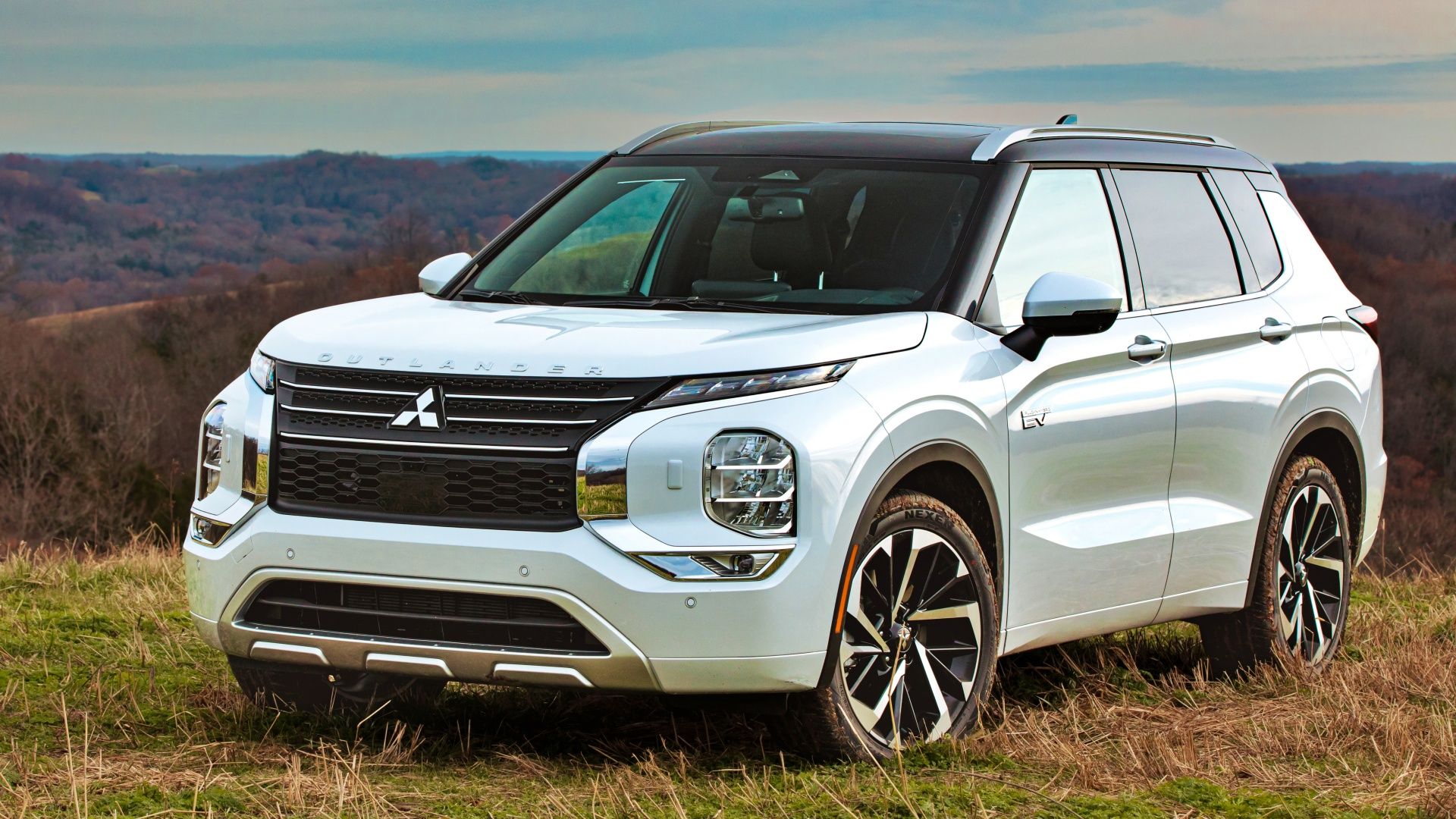
12. **Mitsubishi Eclipse: The Versatile Sports Coupe with Turbocharged Heart**Concluding our journey through the illustrious world of Japanese tuner cars, we arrive at the Mitsubishi Eclipse, a versatile sports coupe that carved its own niche, particularly in the North American market, since its introduction in 1989. Initially positioned as a mid-level four-cylinder coupe, the Eclipse quickly evolved, offering various trim levels and, crucially, turbocharged variants that hinted at its significant performance potential. Its sleek, aerodynamic styling and accessible price point made it an attractive option for enthusiasts seeking both flair and function.
Underneath its appealing exterior, the turbocharged models of the Mitsubishi Eclipse housed engines that were ripe for modification. While its stock output might not have been earth-shattering, the inherent strength and design of these powerplants meant they could be significantly upgraded. Tuners found a rewarding platform for enhancing performance through turbo upgrades, exhaust systems, and engine management tweaks, allowing the Eclipse to punch well above its weight class and compete with more expensive sports cars.
Over the years, the Eclipse underwent minor styling changes, including updated headlights and redesigned bumpers, maintaining a fresh aesthetic appeal. Special editions, such as the “10th Anniversary OZ Rally” released in 1999, further showcased its adaptability, featuring unique design elements and upgraded performance features that appealed to a dedicated fanbase. This continuous evolution and the availability of diverse factory options laid a strong foundation for aftermarket customization.
Car Model Information: 2007 Mitsubishi Eclipse Spyder GS
Name: Mitsubishi Eclipse
Caption: Fourth-generation Mitsubishi Eclipse GS coupe
Manufacturer: Mitsubishi Motors
Production: 1989–August 2011 (906,876 units)
ModelYears: 1990–2012
Assembly: Normal, Illinois
Class: Sport compact
BodyStyle: liftback,coupé
Layout: Front-engine, front-wheel-drive layout,Front-engine, four-wheel-drive layout
Predecessor: Mitsubishi Cordia,Mitsubishi Starion
Categories: 1990s cars, 2000s cars, 2010s cars, All-wheel-drive vehicles, All articles with unsourced statements
Summary: The Mitsubishi Eclipse was a sport compact car manufactured and marketed by Mitsubishi over four generations in the 1990–2012 model years. A convertible body style was added during the 1996 model year.
The first two generations were marketed simultaneously as rebadged variants, including the Eagle Talon and Plymouth Laser — and were a byproduct of Mitsubishi Motors and Chrysler Corporation’s close alliance. Their partnership in turn gave rise to Diamond-Star Motors (DSM). In Japan, the first two generations were sold at a specific Japanese retail chain called Mitsubishi Car Plaza. The third, 2000–2005 generation shared an extended wheelbase variant of their platform with the Chrysler Sebring and Dodge Stratus. In May 2005, the fourth, and final generation Eclipse was introduced, replacing the Chrysler platform used for the third generation with the PS platform.
According to Mitsubishi, the Eclipse was named after an unbeaten 18th-century English racehorse that won 18 races in a row and then retired.
At the end of August 2011, the final Eclipse was manufactured and auctioned for charity.
In 2017, Mitsubishi resurrected the Eclipse name on a compact crossover vehicle, called the Eclipse Cross.
Get more information about: Mitsubishi Eclipse
Buying a high-performing used car >>>
Brand: Mitsubishi Model: Eclipse
Price: $3,900 Mileage: 115,000 mi.
As we’ve traversed this landscape of incredible engineering and cultural phenomena, it becomes abundantly clear that the allure of Japanese tuner cars transcends mere horsepower figures or brand prestige. It’s a rich tapestry woven from innovation, accessibility, and an insatiable desire to push boundaries. These machines are not just vehicles; they are expressions of identity, canvases for dreams, and proof positive that true performance isn’t always about the biggest badge or the steepest price tag. They represent a thriving subculture where passion, ingenuity, and a dash of rebellious spirit reign supreme, offering an unparalleled driving experience and a compelling investment for those who truly understand the art of the automobile. The rappers and discerning enthusiasts who champion these machines aren’t just buying cars; they’re investing in a legacy, a community, and a statement that resonates far beyond the confines of a showroom.



